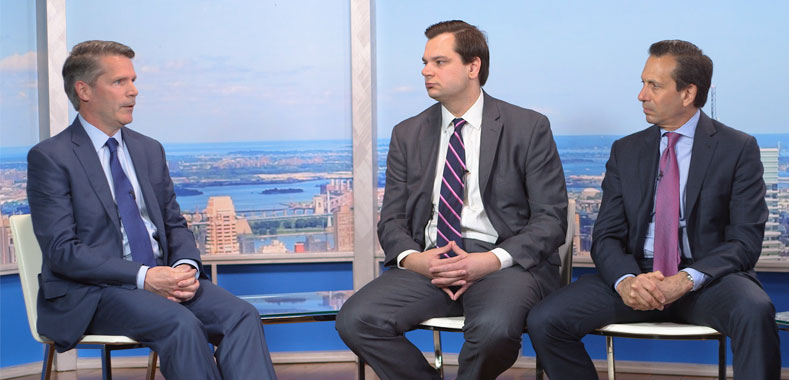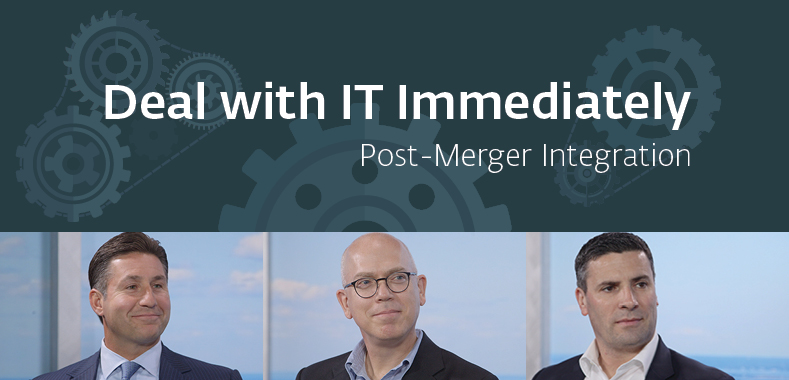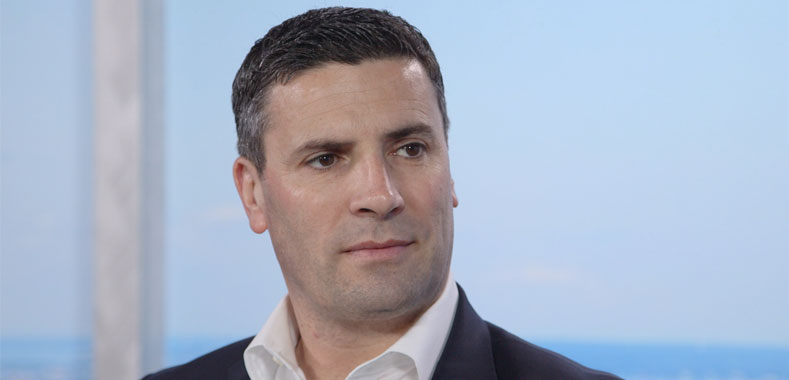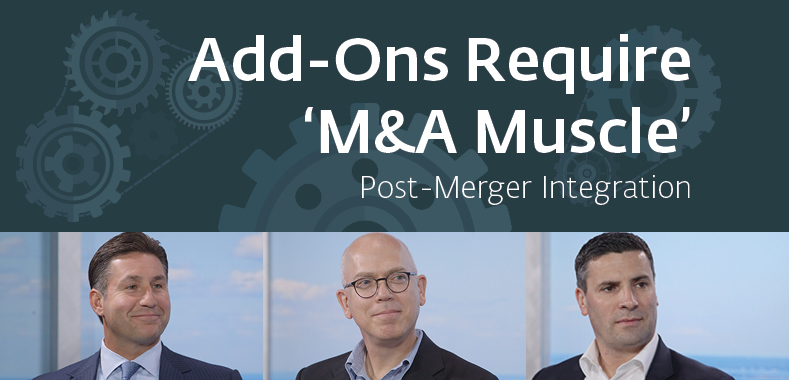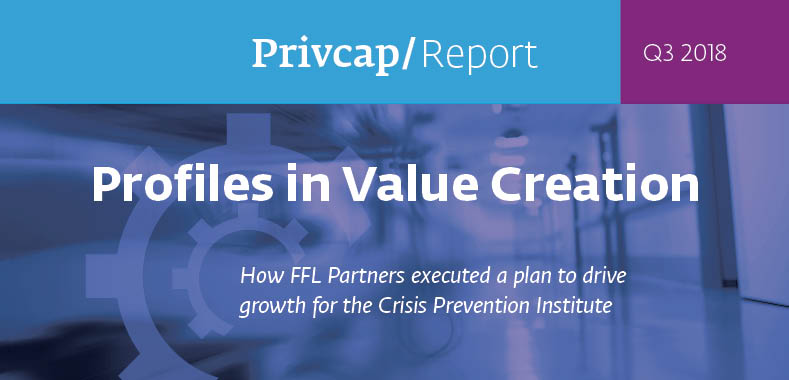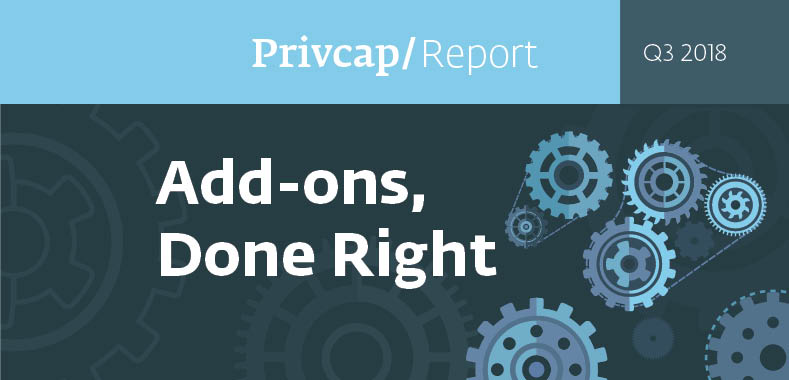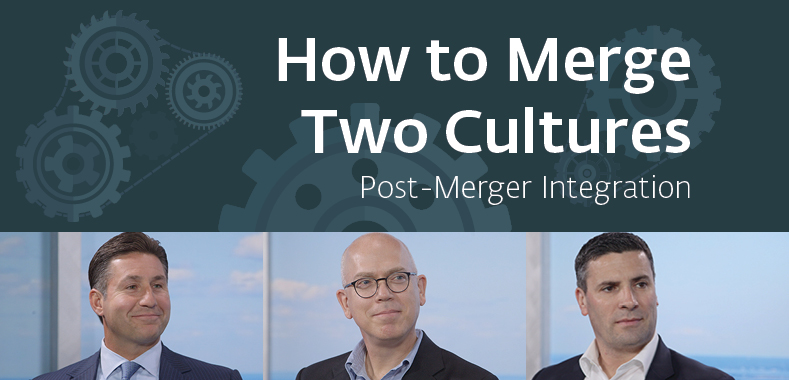
How to Merge Two Cultures
Sometimes the hardest part about doing an add-on is combining employees from companies with very different corporate cultures. Three deal experts discuss the importance of communicating a vision for success with a newly merged company and how to assess something as qualitative as culture.
Transcript Download Transcript
How to Merge Two Cultures
David Snow, Privcap:
Today, we’re joined by Kevin Masse of TA Associates, Tom Anderson of the Riverside Company and Gavin Backos of RSM. Gentlemen, welcome to Privcap today. Thanks for being here.
Let’s talk about a very important aspect of post-merger integration, that I’m guessing is less quantifiable and therefore probably more challenging, and that’s culture. How do you combine the culture of two companies successfully?
Kevin Masse, TA Associates:
All of our businesses are people businesses. We invest in asset-like type businesses, right? Our most important asset walks out the door every night, so we work very hard to ensure that that communication plan is developed: culture, focus and the core values around, “What’s this organization going to focus on going forward?” Those are things we feel are very important. We share that with our executives, who then make sure that communication plan is developed.
Tom Anderson, The Riverside Company:
When you first asked that question about culture and “How do you define it and how do [you know] when it’s bad?,” I thought of the saying from the ‘60s: “I can’t define it, but I know it when I see it.” I think that’s culture. You can’t really define it, but when you see it, when it’s working, you know. There are some things you can do as part of the integration that are so important. One is just to be present.
So often, I find management teams will buy a company and then they’ll just leave it there and they won’t go physically to the site, they won’t interact with the management team and they’ll just assume it’s going to keep going. The company has to be present in the company that they bought, and vice versa, and they have to be mixing it up with each other. They have to try to take roles from one and import them into the other legacy company. Take roles from this legacy company and put them back, so that the cultures have to get mixed, because until they get mixed, you’re not going to get a single culture.
Masse: We spent a lot of time on both when we’re investing in a business, but also as we’re doing acquisitions … we engage consultants who help us go conduct management interviews and management assessments, and help us determine what’s the cultural fit. So, we develop a profile for our existing company. It’s our management team. We understand [the] strengths and weaknesses of that team, and then we extend that process to acquisitions.
Anderson: One thing, too, that you have to do is, when you find nuggets of bad culture and bad attitude as part of the acquisition, you have to carve it out quickly. Inevitably, you’re going to have some managers, some faction of the organization or the other, that is against this and is either vocal or with underlying tones and underlying waves trying to dismantle it or take it off its footing. When you find that, it’s good to cut that out right away, because bad attitudes are really life–threatening to an integration.
Gavin Backos, RSM:
I’ve had multiple situations where you have barriers amongst folks just fighting to have their way or that way to find the direction forward. I think the best way to do that is just empowering the right stakeholders to oversee this and work alongside third–party incumbents to make sure the decisions are made, to manage emotions. You’ve got some folks who have been working with these companies for decades and it’s hard to let things go.
Masse: That’s where the M&A muscle really comes into play, because executives who are serial acquirers — meaning they know how to acquire business, so they developed that M&A muscle across their organization — can quickly spot and identify potential culture issues and actually they focus on it. They have the intuition and the instinct. They know that that’s critical.
Snow: Is it typically the case that the acquiring company, if it’s much larger, will simply impose its culture on the company being acquired?
Masse: I think as it relates to what I call those shared service-center-of-excellence-type capabilities, where scale matters — think of human capital, talent management, IT, IT infrastructure and support, app development, finance, legal — those are some things where the bigger player just naturally should have more of a competitive advantage in terms of driving efficiency in better outcomes, because of scale. But what we find and where technology investors, consumer financial technology, financial services — we look at our business services. We look at some really cool businesses where we’ll buy a smaller company that has cutting-edge capabilities, and what we’re thinking about is, “Yeah, we’ll help you on some of the back-office stuff, because you’re scaling and we’re already at scale. But there are some things you’re doing — whether it’s around your product roadmap, or the way you’re developing your next-gen technology, or the way you engage with your people — that we find to be incredibly valuable and strategic.”
We sit back and, when we do acquisitions, you never find a founder, or CEO or a board of a company that says, “We love to manage G&A.” It’s about the customers, it’s about the product, it’s around the services. So, we focus on that. We sit back and say, “We’re buying you for a reason.”
Snow: Any amusing stories you can share where a cultural issue popped up that surprised you and proved surprisingly difficult to resolve?
Anderson: I’ve had a couple of companies in Europe where the two countries historically haven’t really gotten along that well and that just continues right into corporate America. That’d be one example.
Backos: You took the words out of my mouth. I think cross-border is key. You know, a French or American company — I can tell you the stories were there. Cross-border, for sure.
Masse: We had a really cool company in our portfolio do a game-changing acquisition. It essentially acquired one of its largest competitors. Our CEO had great instincts and setback and, by the way, on opposite sides of the coast. He went, got a place [on] Airbnb for four months at the company he just bought’s location, and showed up every day to their office saying, “I’m part of the collective team. You are now part of our team.” I’ve got to tell you, the significance of that — the messaging for those employees relative to that CEO in the combination of the two businesses — was amazing.




